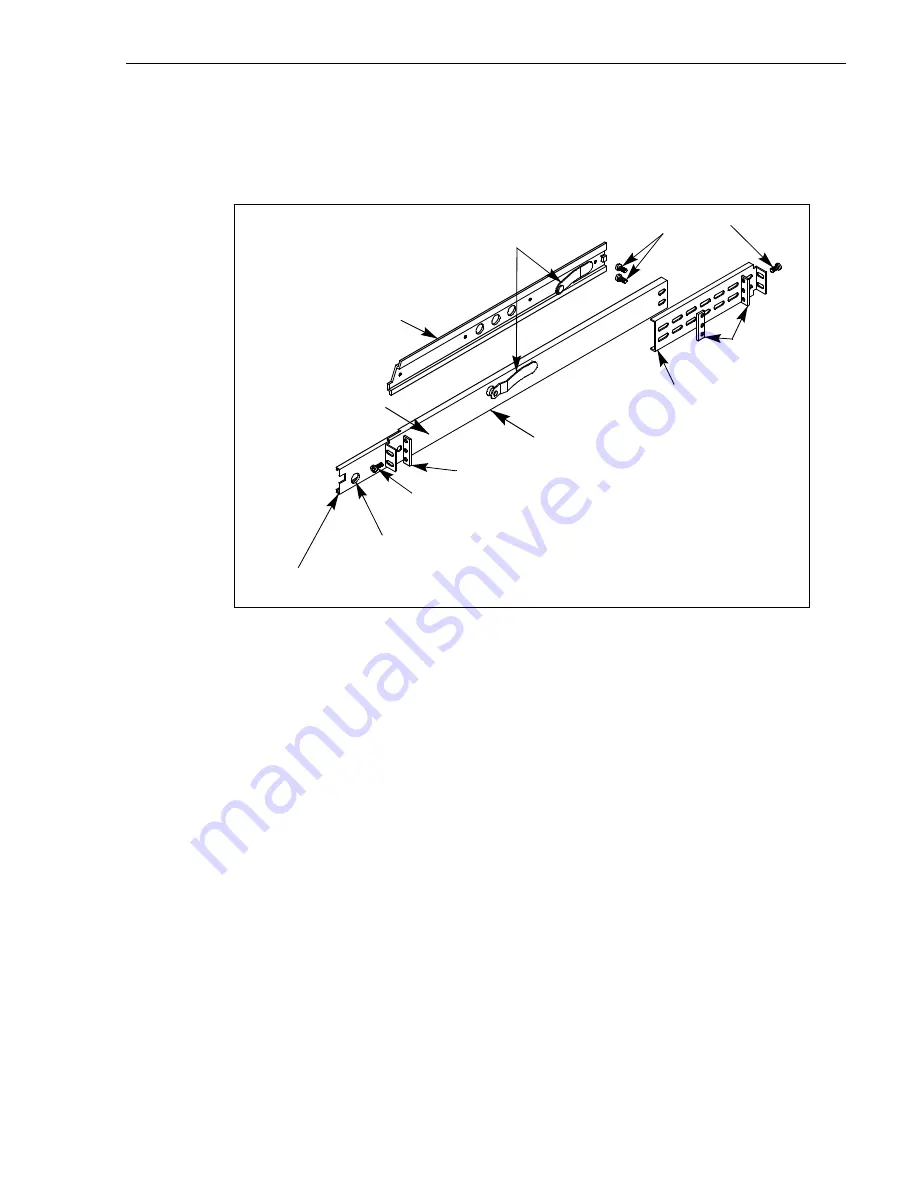
Rack mount hardware shipped with the Profile XP system
333
Rack mount hardware shipped with the Profile XP system
Your Profile XP comes with rack mounting hardware as shown. The Profile XP and
PAC216 are shipped with the chassis sections already attached.
Rack mounting Fibre Channel RAID systems
To rack mount these storage systems, refer to the rack mounting information in the
PFC500, PFR 500, or PFR600 Instruction Manuals.
Chassis section pre-installed
Automatic
Rack
Section
10-32 PHS
10-32 PHS
Flat
Nut
Flat Nut Bar
Intermediate
Stop Latch
Rear
NOTE: Right-hand and left-hand stationary section is designated by the
RH and the LH marked on the rails. Stop latch holes should be towards
Stationary
Summary of Contents for PROFILE XP PVS Series
Page 14: ...Preface 14 Profile XP System Guide 23 July 2004 ...
Page 64: ...Chapter 2 Working with Configuration Manager 64 Profile XP System Guide 23 July 2004 ...
Page 130: ...Chapter 4 Adding or Removing Channels 130 Profile XP System Guide 23 July 2004 ...
Page 144: ...Chapter 4 Adding or Removing Channels 144 Profile XP System Guide 23 July 2004 ...
Page 232: ...Chapter 7 Modifying a Channel Timecode Settings 232 Profile XP System Guide 23 July 2004 ...
Page 238: ...Chapter 8 Modifying a Channel Ancillary Data 238 Profile XP System Guide 23 July 2004 ...
Page 246: ...Chapter 9 Managing Optional Licenses 246 Profile XP System Guide 23 July 2004 ...
Page 288: ...Chapter 11 Setting up a Simple Network 288 Profile XP System Guide 23 July 2004 ...
Page 310: ...Chapter 12 Solving Common Setup Problems 310 Profile XP System Guide 23 July 2004 ...
Page 344: ...Chapter C 344 Profile XP System Guide 23 July 2004 ...
















































